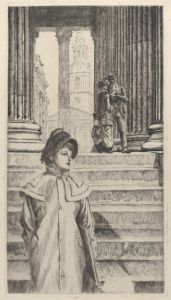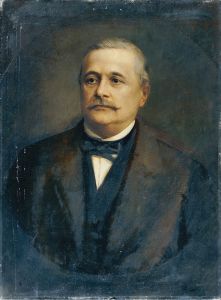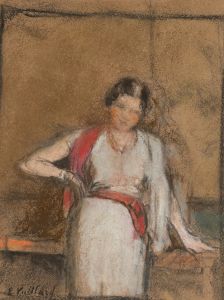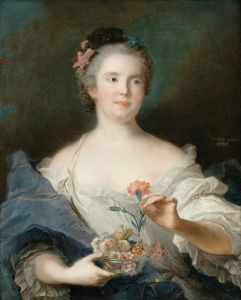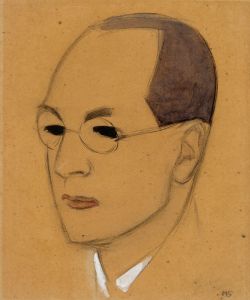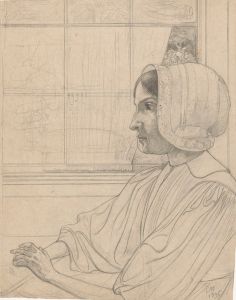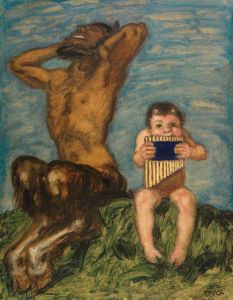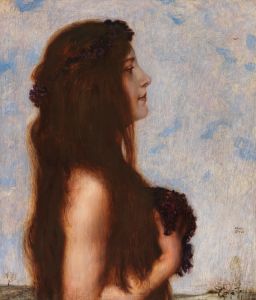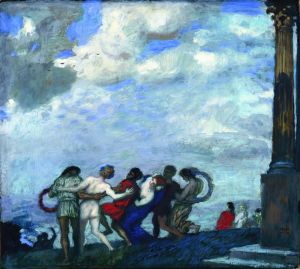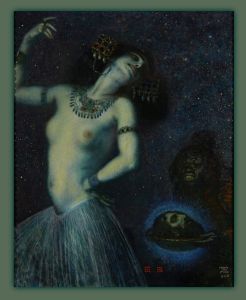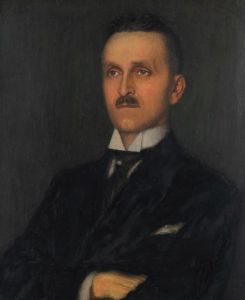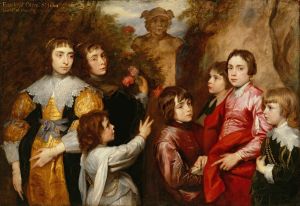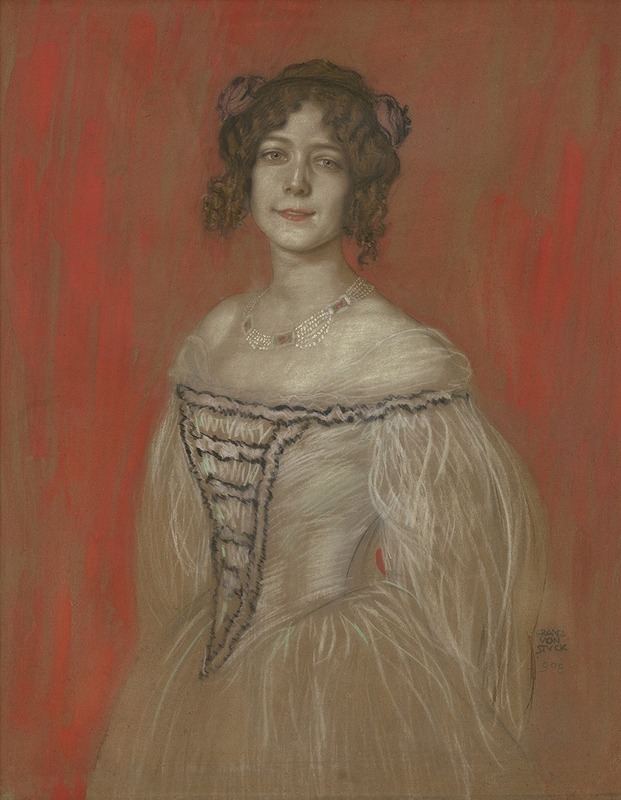
Olga Lindpaintner
A hand-painted replica of Franz von Stuck’s masterpiece Olga Lindpaintner, meticulously crafted by professional artists to capture the true essence of the original. Each piece is created with museum-quality canvas and rare mineral pigments, carefully painted by experienced artists with delicate brushstrokes and rich, layered colors to perfectly recreate the texture of the original artwork. Unlike machine-printed reproductions, this hand-painted version brings the painting to life, infused with the artist’s emotions and skill in every stroke. Whether for personal collection or home decoration, it instantly elevates the artistic atmosphere of any space.
Franz von Stuck was a prominent German painter, sculptor, and architect, known for his role in the Symbolist movement and as a founding member of the Munich Secession. Born on February 23, 1863, in Tettenweis, Bavaria, Stuck gained recognition for his evocative and often mythological subject matter, as well as his distinctive style characterized by dramatic contrasts and a rich use of color.
One of Stuck's notable works is the painting "Olga Lindpaintner," which depicts a woman named Olga Lindpaintner. Unfortunately, detailed information about this specific painting is limited, and it is not as widely documented as some of Stuck's other works. However, it is known that Stuck often painted portraits of individuals from his social circle, capturing their likeness with a blend of realism and symbolic elements.
Stuck's portraits are often imbued with a sense of psychological depth, reflecting the inner world of the subject. His ability to convey emotion and character through facial expressions and posture is a hallmark of his portraiture. In the case of "Olga Lindpaintner," it can be assumed that Stuck applied these techniques to create a compelling representation of the sitter, although specific details about the painting's composition, size, and current location are not readily available.
Franz von Stuck's broader body of work includes a variety of themes, ranging from mythological and allegorical scenes to portraits and landscapes. He was particularly fascinated by the interplay of light and shadow, which he used to enhance the dramatic effect of his paintings. This technique is evident in many of his works, where he skillfully manipulates light to draw attention to certain elements and create a sense of depth.
Stuck's influence extended beyond his paintings; he was also a respected teacher at the Academy of Fine Arts in Munich, where he mentored several future luminaries of the art world, including Paul Klee and Wassily Kandinsky. His contributions to the Munich Secession, an art movement that sought to break away from traditional academic art, helped pave the way for modernist trends in German art.
Despite the limited information on "Olga Lindpaintner," Franz von Stuck's legacy as a master of Symbolism and portraiture remains significant. His works continue to be studied and admired for their technical skill, emotional resonance, and innovative approach to traditional subjects. Stuck passed away on August 30, 1928, in Munich, leaving behind a rich legacy that continues to influence artists and captivate audiences worldwide.





